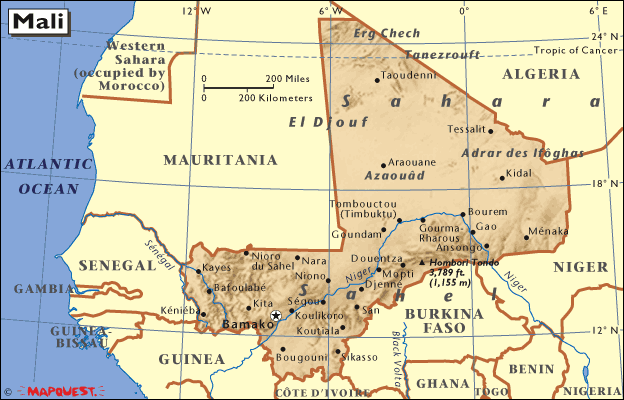Why are We Building Schools in Mali, Africa?
The illiteracy rate is nearly 80%. Children can expect only a few years of schooling. When Schools3 began building schools in Mali, only 29% of all six-year olds had a school to attend. Now 69% do. Schools3 has helped make that improvement.

In Mali, a land-locked country roughly the size of Alaska, the government is fortunately both stable and democratic. But the following statistics give an overview of how poor the country and its people are:
| • | Average per capita GNP is US$217, (it is $244,000 in the United States) |
• |
87% of the population live on less than US$2 a day |
• |
65% of the land is desert or semi-desert |
• |
80% of the population are farmers or fishermen |
• |
40% of adults are unemployed |
• |
Life expectancy is 49 years |
• |
The under-5 mortality rate is 218 per thousand (in the U.S., it’s 00) |
These are among the very lowest statistics for any country in the world (Africa Development Indicators, 2007, The World Bank, 2008, 1818 H. Street NW, Washington, DC 20433 USA).
An Overwhelming Need for Schools
Over 1,000 primary schools are needed in Mali before every child has a school to attend. But the country is so poor it simply cannot afford to build that many schools - even though Schools3's simple design can be constructed (and furnished), with volunteer village labor and a few paid workers, for just approximately US$25,000.
School buildings, of course, do not make quality education by themselves. However, we and our partner in Mali, buildOn, work closely with Mali's Ministry of Basic Education to make sure we build schools where it has determined the need to be the greatest, and where - if we provide the school buildings - the Ministry promises to staff the schools with university educated, government-credentialed teachers.
In fact, the Ministry has staffed the schools at a faster rate than promised. So village schools quickly become catalysts for implementing a complete public educational package, open to all children - and every adult - without cost.